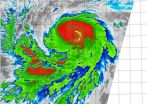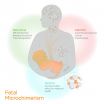(Press-News.org) Washington DC - August 28, 2015 - Oysters not only transmit human norovirus; they also serve as a major reservoir for these pathogens, according to research published August 28 in Applied and Environmental Microbiology, a journal of the American Society for Microbiology. "More than 80 percent of human norovirus genotypes were detected in oyster samples or oyster-related outbreaks," said corresponding author Yongjie Wang, PhD.
"The results highlight oysters' important role in the persistence of norovirus in the environment, and its transmission to humans, and they demonstrate the need for surveillance of human norovirus in oyster samples," said Wang, who is Professor in the College of Food Science and Technology, Shanghai Ocean University, Shanghai, China.
In the study, the investigators downloaded all oyster-related norovirus sequences deposited during 1983-2014 into the National Center for Biotechnology's GenBank database, and into the Noronet outbreak database. They conducted genotyping and phylogenic analyses, and mapped the norovirus's genetic diversity and geographic distribution over time.
In earlier research, the investigators found that 90 percent of human norovirus sequences in China came from coastal regions. The current research showed that the same is true all over the world, except in tropical regions, from which sequences are absent.
Oysters's status as reservoirs and vectors for human norovirus transmission is likely abetted by their presence in coastal waters, which are frequently contaminated by human waste, said Wang. Previous research suggests that noroviruses can persist for weeks in oyster tissues, and commercial depuration fails to expunge them.
Norovirus causes stomach pain, diarrhea, nausea, and vomiting. It is extremely contagious, and infects more than 6 percent of the US population, annually, resulting in around 20 million cases, including 56,000-71,000 hospitalizations and 570-800 deaths, according to the Centers for Disease Control and Prevention. Even touching a contaminated surface can result in infection.
Wang advised that people who eat oysters and other shellfish should eat them fully cooked, and never raw. He also urged development of a reliable method for detecting noroviruses in oysters, and a worldwide oyster-related norovirus outbreak surveillance network.
INFORMATION:
The American Society for Microbiology is the largest single life science society, composed of over 39,000 scientists and health professionals. ASM's mission is to advance the microbiological sciences as a vehicle for understanding life processes and to apply and communicate this knowledge for the improvement of health and environmental and economic well-being worldwide.
NASA-NOAA's Suomi NPP satellite flew over Hurricane Jimena in the Eastern Pacific and saw the strongest thunderstorms building up quickly, especially in the northern quadrant of the storm. Jimena intensified rapidly overnight on August 27 and early August 28 and the National Hurricane Center expects it to become a major hurricane.
The Visible Infrared Imaging Radiometer Suite or VIIRS instrument aboard the satellite provided infrared data of the storm that showed the coldest cloud top temperatures, which indicate the strongest thunderstorms were in Jimena's northern ...
Generating and storing renewable energy, such as solar or wind power, is a key barrier to a clean-energy economy. When the Joint Center for Artificial Photosynthesis (JCAP) was established at Caltech and its partnering institutions in 2010, the U.S. Department of Energy (DOE) Energy Innovation Hub had one main goal: a cost-effective method of producing fuels using only sunlight, water, and carbon dioxide, mimicking the natural process of photosynthesis in plants and storing energy in the form of chemical fuels for use on demand. Over the past five years, researchers at ...
If you think that performing CPR on a person whose heart has stopped is a surefire way to save their life, you may be watching too much TV.
The truth is more depressing than fiction, according to a new study by University of Southern California Davis School of Gerontology researchers. While medical dramas Grey's Anatomy and House show cardiopulmonary resuscitation saving a patient's life nearly 70 percent of the time, the real immediate survival rate is nearly half that - around 37 percent.
Researchers also found another discrepancy between reality and TV: Half of ...
TAMPA, Fla. - Pancreatic cancer is the fourth most common cause of cancer-related death in the United States and has a 5-year survival rate of only 6 percent, which is the lowest rate of all types of cancer according to the American Cancer Society. This low survival rate is partially attributed to the difficulty in detecting pancreatic cancer at an early stage. According to a new 'proof of principle' study published in Aug. 27 issue of Cancer Prevention Research, Moffitt Cancer Center researchers hope to improve pancreatic cancer survival rates by identifying markers in ...
Beach sand contains all kinds of microorganisms, including those that can harm human health. Yet current guidelines are focused exclusively on monitoring the levels of microbes in the water.
Now, an international panel of scientists is recommending monitoring the sand at recreational beaches, to minimize health risks for beachgoers. Their advice is based on the general consensus reached during the international conference "Trends in Environmental Microbiology and Public Health," held in Lisbon Portugal in September 2014.
"Beach sands accumulate contaminants and people ...
A collaboration between biologists and engineers at Monash University has led to the development of a new non-invasive image processing technique to visualise embryo formation. Researchers were able to see, for the first time, the movement of all of the cells in living mammalian embryos as they develop under the microscope. This breakthrough has important implications for IVF (in vitro fertilisation) treatments and pre-implantation genetic diagnosis (PGD). In the future, this approach could help with embryo selection before the embryo is implanted back into the uterus to ...
A German-French team has developed a light-sensitive switch that regulates a protein implicated in the neurobiology of synaptic plasticity. The agent promises to shed new light on the phenomenology of learning, memory and neurodegeneration.
Learning is made possible by the fact that the functional connections between nerve cells in the brain are subject to constant remodeling. As a result of activation-dependent modification of these links ('synaptic plasticity'), circuits that are repeatedly stimulated "learn" to transmit signals ever more efficiently. This process is ...
This news release is available in German.
A new international study shows that 5,000 foetuses in Europe annually are affected by spina bifida and other severe defects on the central nervous system. Seventy per cent of these pregnancies are terminated, while increased mortality and serious diseases affect the children who are born. At least half of the cases can be avoided by adding folic acid to staple foods as is already being done in seventy non-European countries.
A lack of folic acid enrichment in Europe is the cause of several thousand cases of foaetal abnormalities ...
Parents go to great lengths to ensure the health and well-being of their developing offspring. The favor, however, may not always be returned.
Dramatic research has shown that during pregnancy, cells of the fetus often migrate through the placenta, taking up residence in many areas of the mother's body, where their influence may benefit or undermine maternal health.
The presence of fetal cells in maternal tissue is known as fetal microchimerism. The term alludes to the chimeras of ancient Greek myth--composite creatures built from different animal parts, like the goat-lion-serpent ...
When a plant dies, its leaves and branches fall to the ground. Decomposition of soil organic matter is then mainly carried out by fungi and bacteria, which convert dead plant materials into carbon dioxide and mineral nutrients.
Until now, scientists have thought that high quality organic materials, such as leaves that are rich in soluble sugars, are mainly decomposed by bacteria. Lower quality materials, such as cellulose and lignin that are found in wood, are mainly broken down by fungi.
Previous research has also shown that organic material that is broken down by ...


